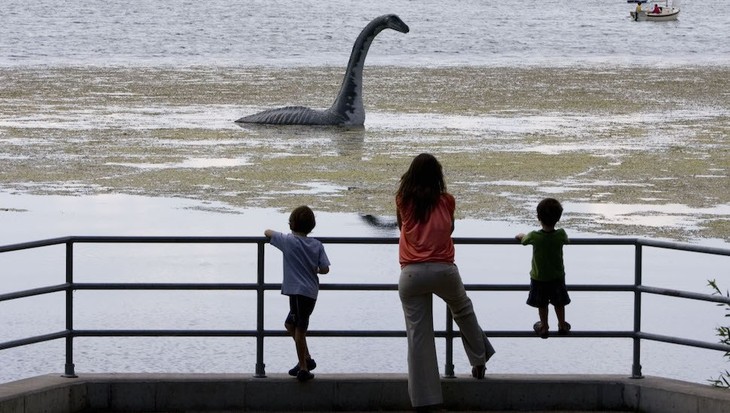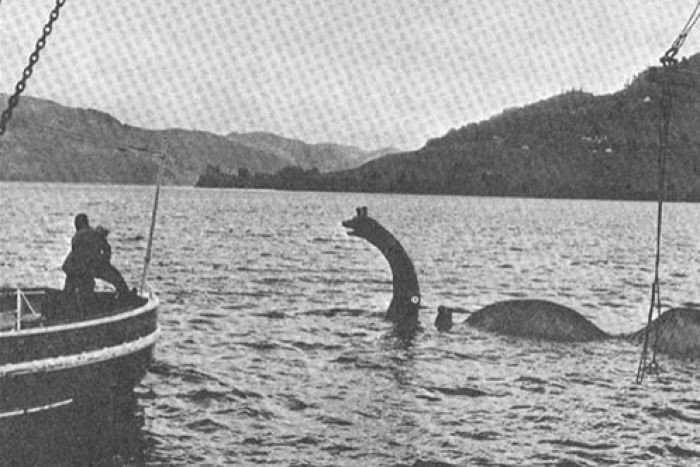(VOVWORLD) - Scotland is well-known for bagpipe, kilt, whitsky, golf, and the Loch Ness Monster. The legend of Loch Ness has inspired many film makers and is important to the region’s tourism industry. In this week’s Culture Rendezvous edition, Raymond McRobbie of Scotland will tell us some facts that you may not know about the Loch Ness mystery.
Q: Hi Ray! Welcome to VOV24/7’s Culture Rendezvous! Could you briefly introduce about yourself?
A: My name is Raymond. I live in Hanoi. I’m from Scotland. Originally, I live in the northeast of Scotland, which is quite close to Inverness where the Loch Ness monster is supposedly from. I have been in Hanoi for a year. I’m gonna be here for a long time because Hanoi is awesome.
Q: So tell me what the story is behind the Loch Ness Monster!
A: The Loch Ness monster is a mythological creature which supposedly lives in the body of water known as Loch Ness in the north of Scotland in the UK. Loch Ness is situated in the Scottish Highlands next to the city of Inverness. Loch, spell L-o-c-h, is the name for a lake in Scotland.

Loch Ness, most adventure place in Scotland (Photo: ladla.net)
|
Q: Many people seem to insist that the sea creature is real. What do they say it looks like?
A: It is often described as being large in size, with a long neck like that of a giraffe or more commonly like a dinosaur like a brontosaurus, and with humps that you can see from the water. For almost 100 years people have tried to catch images of the monster, by taking photographs and even using sonar and radar systems to detect it in the waters.
Q: There seems to be lots of photographs of the Loch Ness monster even though scientists say it doesn’t exist. Where do these images come from?
A: Well modern interest in the monster was sparked way back in 1933 when a man named George Spicer and his wife saw what they say was “a most extraordinary form of animal” cross the road right in front of their car! They described the creature as having a 4 feet high body and almost 25 feet long with a long, wavy, narrow neck, slightly thicker than an elephant’s trunk. They couldn’t see any limbs on the creature. It lurched across the road towards the loch 20 yards away.
The next two sightings were deemed to be just otters playing around in the water, but then in 1934 the most popular image was taken. It was known as the surgeon’s photograph because the man at the time did not want his name to be published alongside it. It was almost believed as late as the 1990s that this was a genuine image of the Loch Ness monster, and it’s worth checking out the picture on Google. However an investigation and a documentary discovered that it was nothing more than an elaborate hoax.

Experts scouring the loch uncovered a model used in a film from the 1970s (Photo:Kongsberg Maritime)
|
Q: So what happened?
A: The creature was reportedly a toy submarine built by Christian Spurling, in an attempt to trick the newspaper known as The Daily Mail. He and two others bought the toy submarine and wood putty to create the head and neck. After testing it in a local pond the group went to Loch Ness, where they took the photos near a Tea House. When they heard a water policeman approaching, they sank the model and so it is presumably still somewhere in Loch Ness! The man who developed the photographs sold the first one to the Daily Mail, who then announced that the monster had been captured on film!
Q: It must be quite easy to fake pictures these days, so it looks like maybe we’ll never get the true story.
A: There have been scientific searches set up under the waters of Loch Ness to try and get further information but nothing concrete has ever come up yet. People continue to make sightings but they can usually be explained by regular local animals, camera trickery, or shadows due to nearby trees and the ripples in the water. In 2015, even Google took their famous Street View cameras and attached them to a boat to try and get more evidence, but alas nobody has yet found the real Loch Ness Monster. Maybe when I go home next year I will try and find him!
Q: Thank you, Ray, for the talk! See you next time for more cultural stories from Scotland! For VOV24/7’s Culture Rendezvous segment, I’m Thu Ly. Catch you next time!